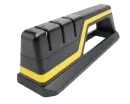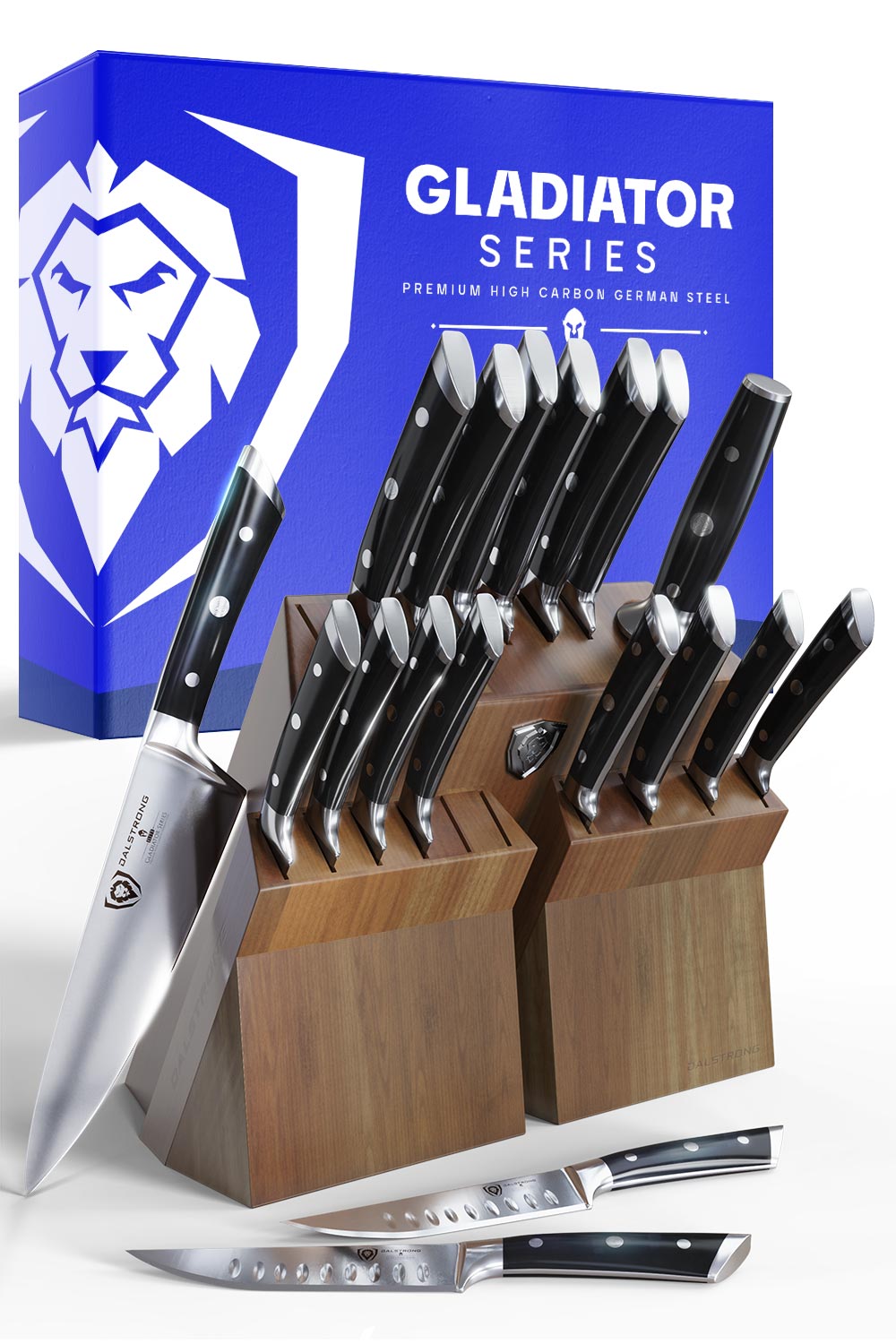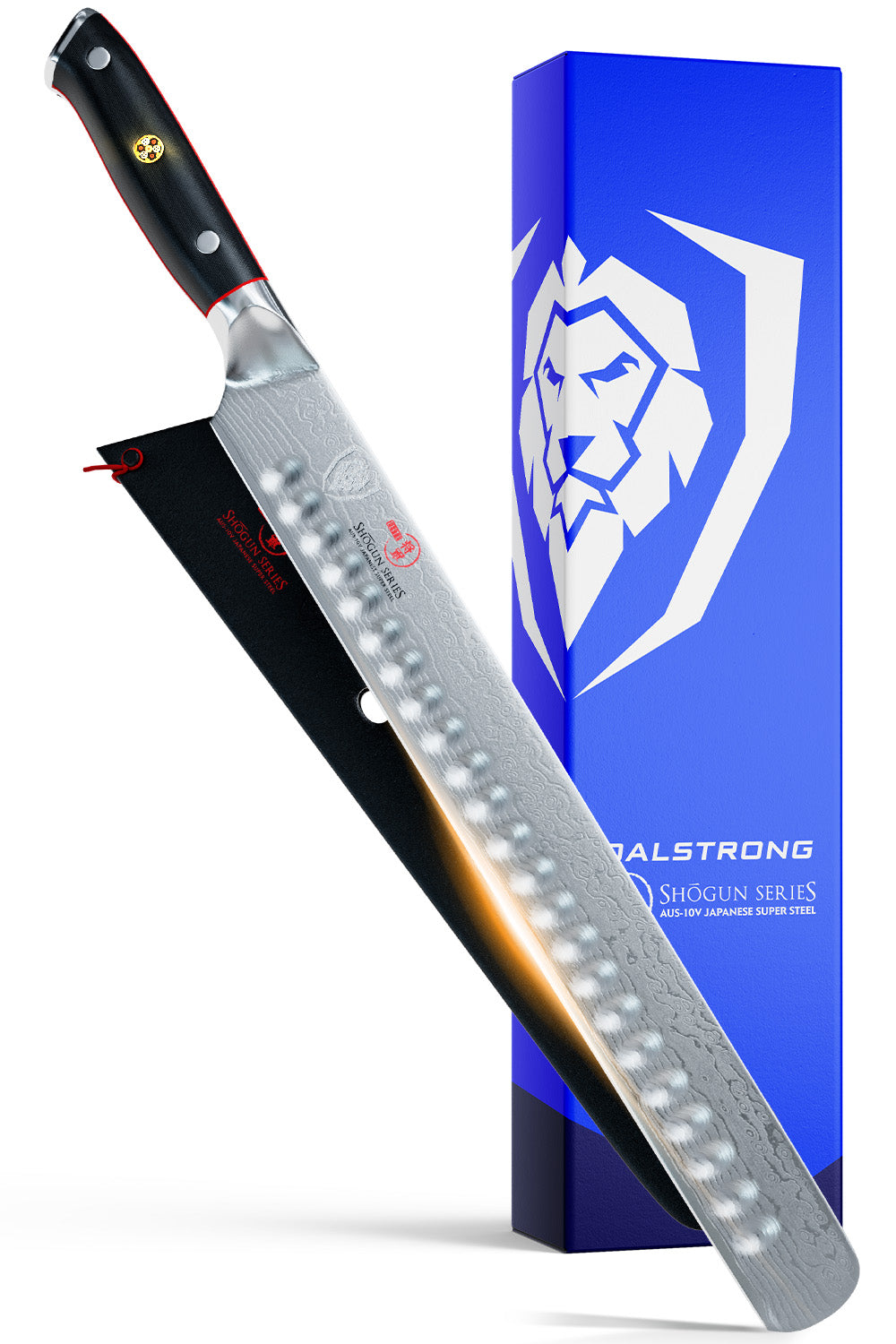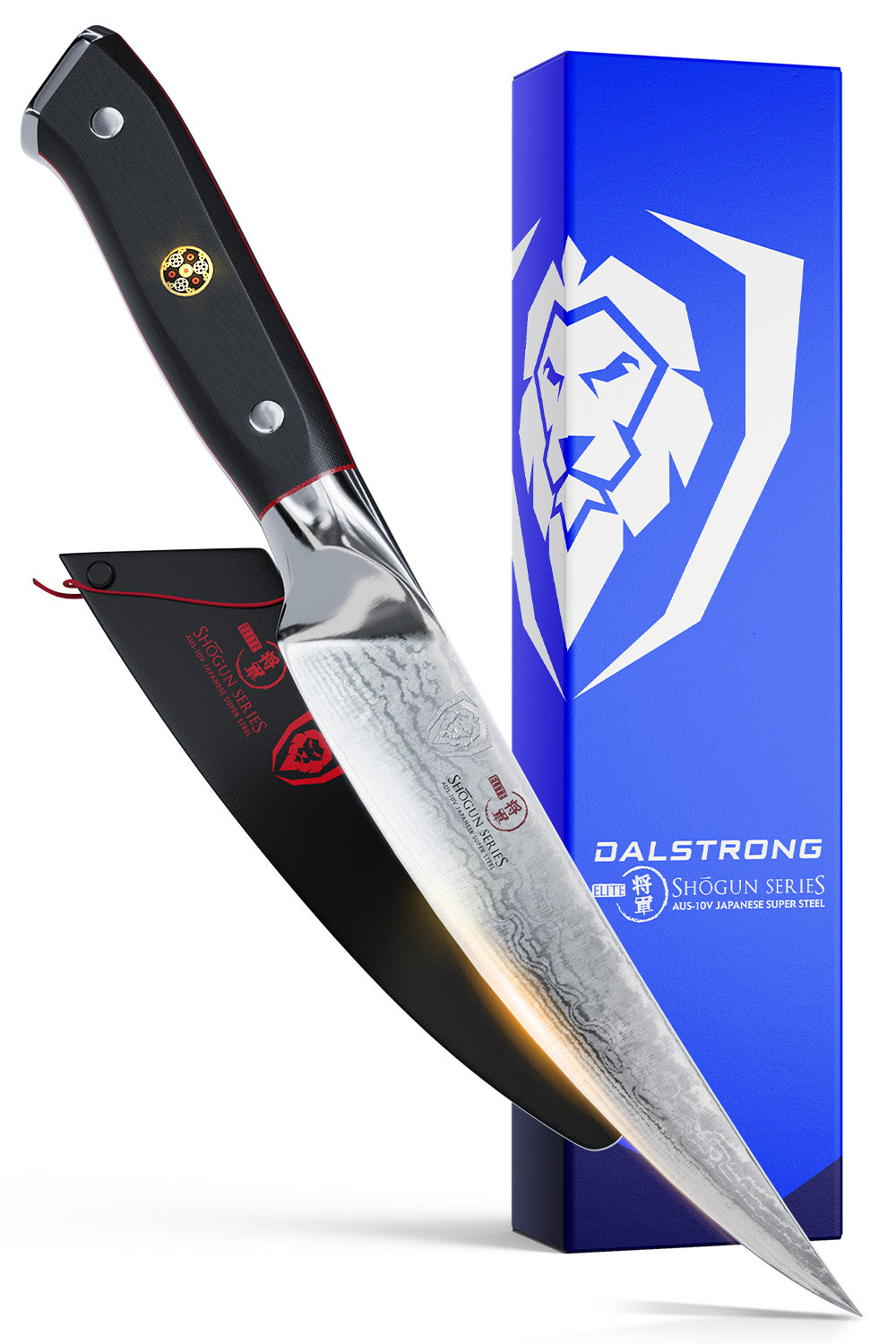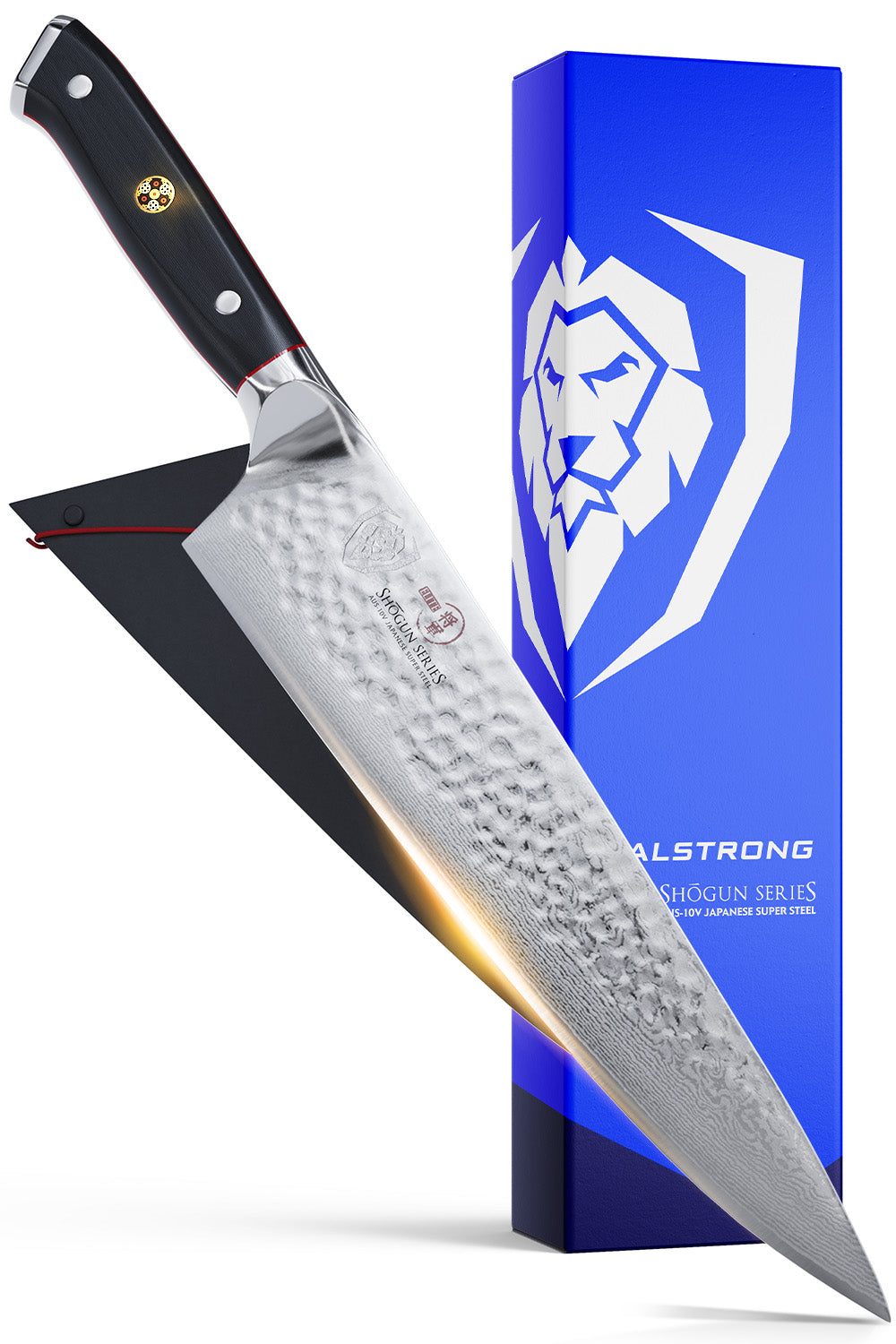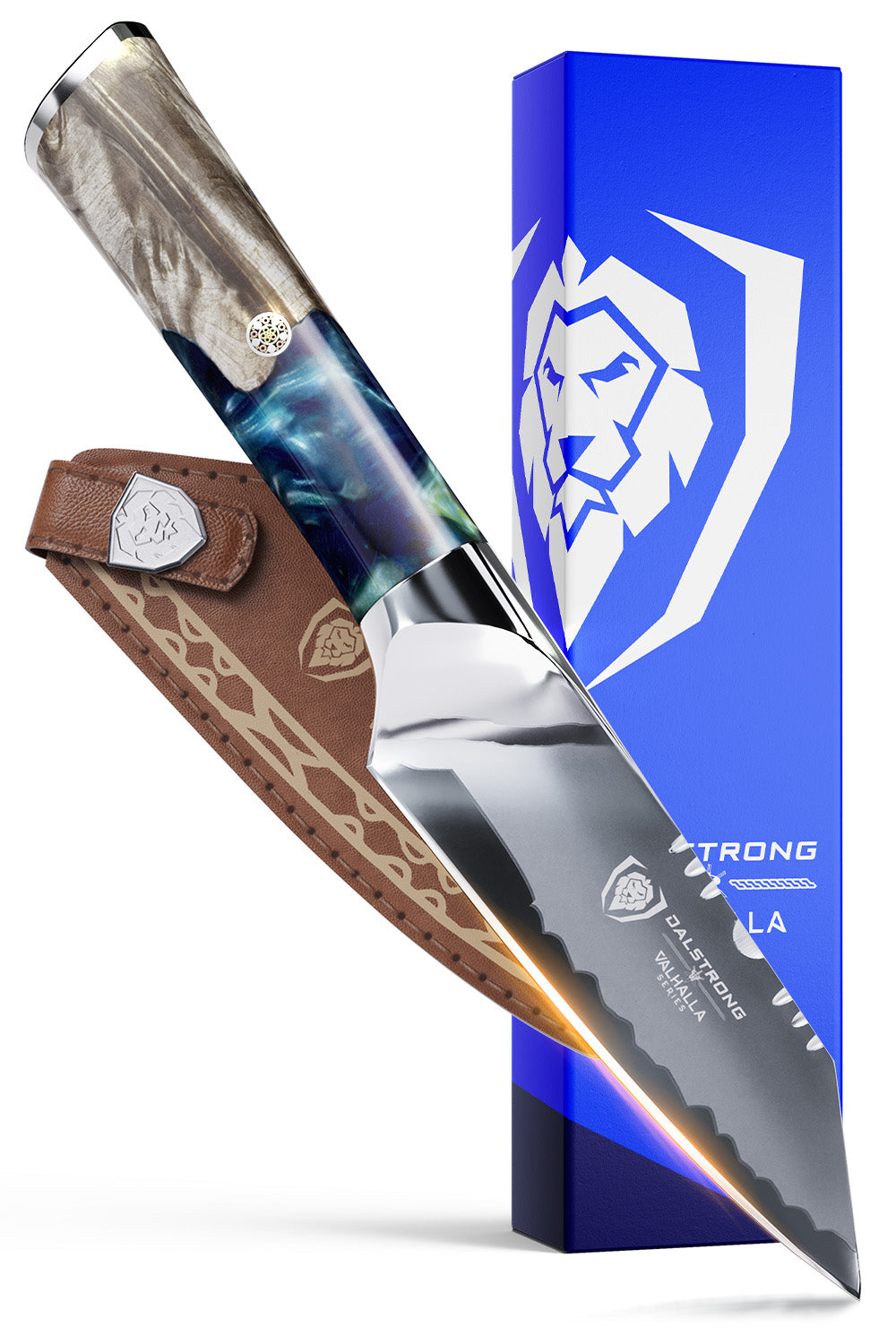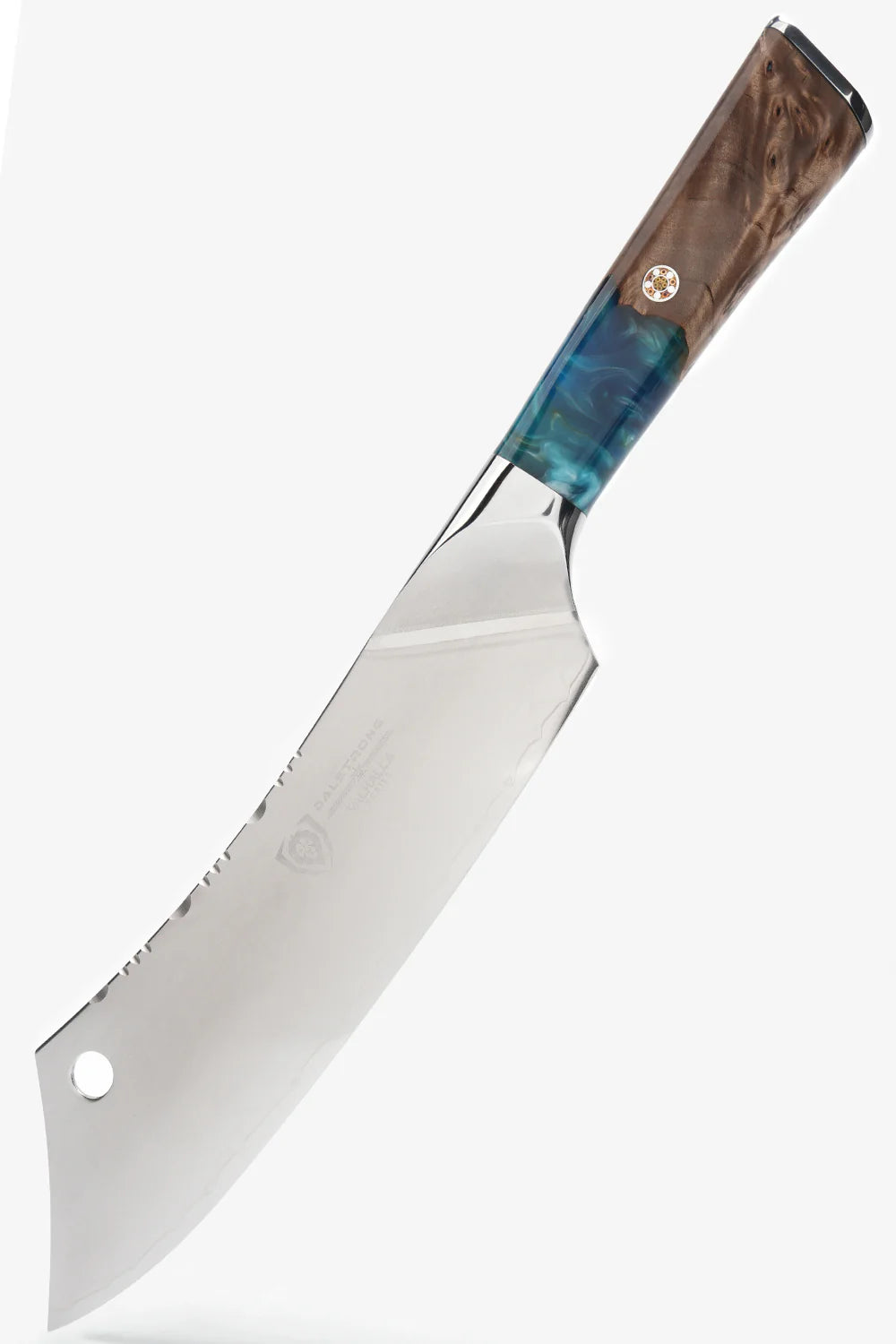Dalstrong #400/#1000 Grit Premium Whetstone Set
Best Sharpening Stones
- #3000/#8000 Grit Premium Whetstone Set
- #400/#1000 Grit Premium Whetstone Set
- Premium Whetstone Kit (#1000/#6000 Grit)
- Portable Whetstone Kit - #1000/#6000 Grit Combo - with Oak Storage Box
Dalstrong #3000/#8000 Grit Premium Whetstone Set
If you wouldn’t like to serve a dull dish, why settle for a dull knife?
A study by the University of Colorado found evidence of a highly skillful method of sharpening and retouching stone tools developed at least 75,000 years ago. Meaning: sharpening knives is not a temporary trend or something we do “just for fun”. As long as humans need to cut things; we are going to need to keep our cutting tools up to the task.
Fortunately, a lot has happened in these 75,000 years, and we now have excellent sharpening tools that allow us to take care of the job ourselves.
Content Table
- What Is A Sharpening Stone?
- Do You Need A Sharpening Stone?
- Choosing The Perfect Sharpening Stone For You
- The Best Sharpening Stones (pros & cons)
- How To Use A Sharpening Stone? (before, during, and after)
- Sharpening Stones Maintenance Tips
- How To Know When It’s Time To Sharpen Your Knife?
- Sharpening vs Honing
1. What Is A Sharpening Stone?
Dalstrong Premium Whetstone Kit (#1000/#6000 Grit)
Knives are one of the most irreplaceable items in any kitchen. Whether you cook a little or a lot, for yourself or for a crowd, vegetables or meat... you will need a loyal tool to do all that slicing and chopping. The thing is, all knives in the world tend to lose sharpness over time, regardless of their quality or their brand. This is where a sharpening stone comes into play as a great resource to bring your blades back to life.
A sharpening stone is a tool used to sharpen the blade's cutting edge. They can also be used as a razor sharpener or as pocket knife sharpeners. Sometimes referred to as water stones or whetstones (as we like to call them here at Dalstrong), they work by removing a small layer of metal from the edge of the knife, as a result of controlled friction between the blade and the surface of the stone. This controlled abrasion then creates a new, sharper edge.
Evidence suggests sharpening stones were first used in the latter stages of the Stone Age; although at the time they measured as much as three or more feet in length and one foot in width. Over time, the stones became smaller and refined. Natural sharpening stones are still in use in some places, but there are many manufactured high-quality options easily accessible today.
2. Do You Need A Sharpening Stone?
Dalstrong #400/#1000 Grit Premium Whetstone Set
Short answer: If you own a knife and cook frequently, you will definitely benefit from owning a premium knife sharpening stone.
Long answer: If you enjoy cooking, it doesn’t matter if it’s only for your family or at a professional kitchen; you are going to need sharp blades to optimize your cooking process, prevent accidents and inconveniences; and extend the life of your knives.
Even if you don’t feel like you need to do it, trust us: you’ll understand it when your knife goes back to slicing those onions with such delicacy and precision they won’t know what hit them!
Benefits of owning a sharpening stone:
- Because you’re going to need to sharpen your knives every few months, having a sharpening stone at home is a wonderful way to do it yourself with little effort.
- Owning and using a sharpening tool yourself will also give you more control over how much you want your knife to be sharpened.
- A good sharpening stone requires little maintenance.
- Sharpening stones are simpler and cheaper than other sharpening devices and methods; and more practical than sending your knives away to be sharpened by someone else.
Are sharpening stones better than other sharpeners?
A Sharpener stone set has advantages over other types of sharpeners. For example, pull-through sharpeners have fixed angles that won’t work the same for different kinds of knives; while sharpening stones will get the job done for practically any type of knife.
Also, sharpening stones give you control; while with other sharpeners, like manual pull-throughs and electric sharpeners, it’s easy to remove more steel than you needed to.
There are a wide variety of brands that sell whetstones knife sharpeners, be sure to choose a company that stands behind their product and only offer quality goods. A poor quality sharpening system can damage your kitchen cutlery.
3. Choosing The Perfect Sharpening Stone
Dalstrong #3000/#8000 Grit Whetstone Set
If you’re new to the topic and you’re feeling a bit overwhelmed, that’s alright! That's why we are here. Sharpening stones can be intimidating at first, but practice makes perfect.
We will say, however, that mastering the art of stones requires some degree of love for food and cooking in general. So if you are committed to the art of cooking (and we will assume that you are, if you ended up here) then you’re halfway there.
The first step is choosing the best sharpening stone for your knives. There are different criteria to take into consideration:
- Grit level. When we talk about the grit level, we are referring to how coarse the stone is. A lower grit level, let’s say between 120 and 400, means a coarse stone that can be used for very dull knives or to remove chips from the blade. A medium grit between 700 to 2000 will work fine with a standard blade that has no significant damage. Finer stones have a more delicate effect on the knife, ideal to polish or maintain its current sharpness.
- Natural vs. Synthetic. Sharpening stones can be either natural or synthetic. The most famous natural stones are the Arkansas stone (novaculite), the Belgian coticule and the Japanese sharpening stones. They are slower (also smoother) and the grit level is more irregular. Synthetic stones are more common and they usually come in aluminum oxide, ceramic stone or diamond.
- Material. The most common materials for sharpening stones are oil stones, diamond stones and water stones. Oil stones use oil as a lubricant. They are versatile and can be found in a variety of grit levels and prices. As a con, they are also the slowest of all stones. Diamond stones come with tiny diamonds attached to the surface; they are fast and efficient; but diamonds are also expensive. How about water stones? Are they different from sharpening stones? The terms often get confused, but water stones are just one kind of sharpening stones, most commonly found in synthetic materials like Aluminum Oxide. They are softer, easier and faster (although the stones wear down more quickly).
- Size and shape. The length of the stone is actually more important than the width of the stone. The longer the stone, the faster and easier it will be to sharpen the knife because you’ll use longer, more fluid strokes.
4. The Best Sharpening Stones
1. #1000 / #6000 Grit with Nagura Stone & Rust Eraser | Premium Whetstone Kit
Best for: Top-notch maintenanceThis is a premium kit containing all you need to ensure your knives’ top performance, whether it is a German or a Japanese-style knife. The #1000 gritstone will make sure your artillery is always ready for action; while the #6000 grit is perfect to polish the edges of your most precious knives.
The kit includes a Nagura flattening stone that will wear away any leftover particles; as well as a rust eraser to keep your blades fresh and clean. The wood base is the perfect surface to sharpen your knives.
PROS:
- Extremely elegant and high-quality; this kit will satisfy even the most demanding chef.
- The whole stone set has been handcrafted with the best materials out there.
- Versatile, yet fancy.
- Over-sized stones allow better sharpening.
CONS
- Beginners might prefer more entry-level sharpening tools.
- These are not the most exciting colors that we offer.
2. #3000 / #8000 Grit | Premium Whetstone Set
Best for: ultra-smooth sharpening.
If you invested in a great set of knives, why wait until they start to lose sharpness to take the matter into your hands? Both the #3000 and the #8000 grit stones will delicately polish your most precious blades (remember the finer the grit, the more precision you will get).
PROS
- This set is ideal when you’re looking for precision instead of power.
- Made of top-grade corundum (aluminum oxide)
- Compatible with optional Acacia Wood Base
- Works for Japanese and German-style knives, as well as scissors and other bladed tools.
CONS
- For knives that are already too dull, you might need a coarser stone.
- Knives that are really out of shape might be better off with a lower grit.
3. #400 / #1000 Grit | Premium Whetstone Set
Best for: Reviving blades
That knife that was once your favorite is slowly losing its spark? Revive the romance with this set: the #400 coarse grit will resuscitate even the dullest of all blades, while the #1000 is an all-purpose sharpening stone that will pamper most of your knives.
PROS:
- Having a stone for sharpening and another for maintenance, this kit is a powerful team to add to your kitchen shelf.
- Individual stones last longer because there’s no cross-contamination.
- Thicker, longer stones are definitely a better investment.
CONS:
- If some of your knives require super-fine sharpening, you would need to add a fine grit stone such as the ones included in the #3000 / #8000 Grit | Premium Whetstone Set.
4. #1000 / #6000 Grit Combo with Oak Storage Box | Portable Whetstone Kit
Best for: Taking your stones on adventures
If your friends were impressed when you pulled out your professional knives during that barbecue, wait until they see the eye-catching style of this oak wooden box containing a high-quality 2-in-1 knife sharpening stone. Designed to cover most of your sharpening needs, wherever you are.
PROS
- Versatile and can be used both for sharpening and for honing.
- Easily portable (you’ll actually want to take it with you).
- Sophisticated and elegant.
CONS
- If you doubt your sharpening skills, then you should first read the Dalstrong step-by-step Whetstone Sharpening Guide and strengthen your expertise on the subject.
- Some people prefer a bamboo base to an oak box.
5. How To Use A Sharpening Stone?
Before you start:
- Soak the sharpening stone in water for 5-10 minutes.
- This is very important to remember: both the angle at which you hold the knife to your stone and the level of pressure you apply need to be consistent throughout the process.
- The best angle will depend on the particular knife style. German blades usually need a 16º-18º angle; while Japanese and one bevel blades will do at 10º-15º. For more info refer to our detailed guide. (Check out the handy angle guide below)
Step by step:
- Place the stone on a flat surface, like the wooden base included in our #1000 / #6000 Grit Premium Whetstone Kit.
- Hold the knife firmly and apply pressure on the spine of the knife with your thumb.
- With your free hand, apply pressure on the cutting edge.
- Slide the blade along the whetstone, away from your body. Lift the knife when you reach the end of the stone. This action should be smooth, starting at the heel and finishing at the tip.
- Repeat several times, according to the dullness of the blade. Some say 10 strokes on each side is a good number for a knife that has gone dull; while 5 should be enough if it’s just maintenance.
- Flip to the other side and start again. This side should be sharpened using the same movement and the same number of times as the first time; to ensure both sides have a consistent edge.
- If the stone has two sides or you have two stones with different whetstone grit size, use the coarser one first to remove most of the material and then the finer side, to polish and finish.
NOTE: Serrated knives will use a different sharpening method. Read our guide for sharpening a serrated knife.
After sharpening your knife
Use a towel to clean your sharpening stone after use. Don’t wash it or rinse it. Store it in its original box or a dry place. If you own a sharpening steel, you can use it after the stones to smooth the sharp edges.
Below is a handy angle guide to consider when sharpening your chef's knife, or any knife for that matter.

6. Sharpening stones maintenance tips
The steel particles you remove when sharpening your knives slowly accumulate on the surface of your stone. You will need to clean your stone eventually, otherwise it can lose its sharpening power.
For properly maintaining your stone, you need to take into account the type of stone. For oil stones, honing oil is commonly used to lubricate, lessen the friction and remove metal fillings; while for water stones, warm water is recommended.
Besides the metal particles, dirt might also accumulate on the stone, usually visible as a glossy gray streak. To remove dirt, you can use special oils such as WD-40. Cover the stone with the product, scrub gently and then wipe it with a wet cloth. Repeat until you can’t see any debris.
Also, please consider that sharpening stones wear over time. There will be high spots and low spots, usually in the middle. Eliminating high sides and flattening the stone is critical. Even here, the type of sharpening stone you own matters a great deal: water stones wear faster than oil stones and will need to be flattened more often.
To flatten your sharpening stone you have several possibilities. Some recommend sandpaper as an inexpensive option. You can also use another sharpening stone (a diamond stone is perfect for the job) or a flattening plate. Move the flattening stone or plate diagonally over the sharpening stone until you flatten the entire surface.
Other ways to take care of your stone are:
- Alternate between sides of the stone
- Let the stones dry before you store them
- Use the correct angle when sharpening
- Use it only on refined tools
7. How to know when it’s time to sharpen your knife?

#1000 / #6000 Grit with Nagura Stone & Rust Eraser | Premium Whetstone Kit | Dalstrong ©
Most knives don’t need sharpening more than two to four times a year; which you can do at home with your sharpening stone. However, it is also recommended to have your knives professionally sharpened every other year.
There are two tests that we recommend to find out whether your knives need to be worked or not. One is the paper test: If your kitchen knife fails to cut through a piece of paper or damages it while slicing it, then you need to sharpen your knife. The second is the simple yet reliable “tomato test”: If your blade breaks your tomatoes instead of slicing them, it’s sharpening time!
8. Sharpening vs Honing
Gladiator Series 10'' Honing Steel
Both are essential to improve or maintain your knife’s performance, but they are not the same thing:
- Honing is maintaining an edge that is already sharp; while sharpening is about creating a new edge for your blade.
- Different tools are needed: Sharpening stones for sharpening; honing rods or honing steels for honing.
- You should hone your knife frequently (some do it after every use). Proper sharpening will be done a few times per year.
Do I also need a honing rod?
A honing steel or honing rod will keep the edge in its original position without removing metal. High-quality steel hones, ceramic steels and diamond sharpening steels are your best options.
How do I use a sharpening steel for honing my knife?
- Use sharpening steels after every use or every couple of days. You should also use it after sharpening your knife for smoothing out the edges. Remember this process won’t remove any material from the blade.
- Hold the steel vertically. Place your knife horizontally, and make sure the edge is touching the steel.
- Then slowly turn your knife, aiming for a 22.5º angle.
- Pull the knife down and across, from heel to tip. Repeat the movement as necessary.
- Switch to the other side and repeat.
Shop Dalstrong Sharpening Stones Today
Written by Eva ContrerasFood & travel writer based in Buenos Aires. Superpowers include relentless curiosity and high tolerance to spicy foods.
































